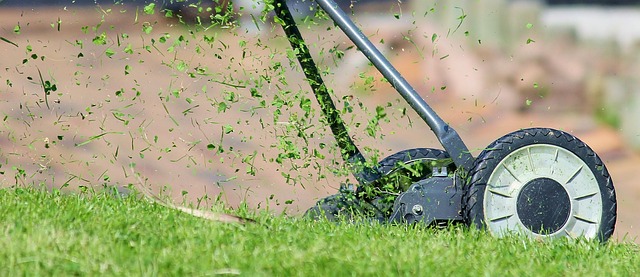Learn more about lawn mowing
Proper lawn mowing is fundamental to maintaining a healthy, attractive yard that enhances your property's curb appeal. Understanding the right techniques, timing, and equipment can transform your lawn care routine from a chore into an effective maintenance practice. From selecting the appropriate mower height to establishing consistent schedules, mastering these essential skills will help you achieve the lush, well-maintained lawn you desire while promoting grass health and growth throughout the growing season.

Learn more about lawn mowing
Maintaining a beautiful lawn requires more than just running a mower across your grass once a week. Effective lawn mowing involves understanding grass growth patterns, seasonal changes, and proper equipment maintenance to achieve optimal results.
Discover Effective Mowing Techniques
The foundation of successful lawn care begins with proper mowing height and pattern. Most grass types thrive when cut to specific heights - cool-season grasses like Kentucky bluegrass perform best at 2.5 to 3 inches, while warm-season varieties such as Bermuda grass prefer shorter cuts around 1 to 2 inches. Following the one-third rule prevents stress on grass plants by never removing more than one-third of the blade length in a single cutting session.
Mowing patterns significantly impact lawn appearance and grass health. Alternating your mowing direction each session prevents soil compaction and encourages upright grass growth. Creating diagonal, horizontal, and vertical patterns not only adds visual interest but also ensures even cutting across different grass grain directions.
Understand the Best Mowing Schedules
Timing your mowing sessions appropriately maximizes grass health and appearance. During peak growing seasons, most lawns require cutting every 5-7 days, while slower growth periods may extend this interval to 10-14 days. Morning mowing, after dew has dried but before afternoon heat peaks, provides ideal conditions for both operator comfort and grass recovery.
Seasonal adjustments play crucial roles in mowing schedules. Spring typically demands more frequent cutting as grass emerges from dormancy, while fall mowing gradually decreases in frequency. Winter preparations may require final cuts at slightly lower heights to prevent snow mold and other cold-weather issues in certain climates.
Explore Tools for a Perfect Lawn
Selecting appropriate mowing equipment depends on lawn size, terrain, and personal preferences. Walk-behind mowers suit smaller properties under half an acre, while riding mowers handle larger areas more efficiently. Zero-turn mowers offer superior maneuverability around obstacles and landscaping features.
Blade sharpness dramatically affects cutting quality and grass health. Sharp blades create clean cuts that heal quickly, while dull blades tear grass, leaving brown edges and increasing disease susceptibility. Professional sharpening services typically charge $10-15 per blade, though many homeowners invest in sharpening equipment for regular maintenance.
Get Tips for Maintaining Your Mower
Regular mower maintenance ensures reliable operation and extends equipment lifespan. Basic maintenance includes checking oil levels before each use, cleaning grass clippings from the deck after mowing, and replacing air filters annually. Spark plug replacement every 100 hours of operation maintains optimal engine performance.
Seasonal maintenance tasks vary by equipment type and usage frequency. Spring preparation involves checking blade sharpness, changing oil, and inspecting belts and cables. Fall maintenance includes fuel stabilizer addition, thorough cleaning, and proper storage preparation to prevent winter damage.
| Equipment Type | Average Cost Range | Key Features |
|---|---|---|
| Push Reel Mower | $100-$300 | Environmentally friendly, quiet operation, precise cutting |
| Gas Walk-Behind | $300-$800 | Self-propelled options, variable cutting heights, bagging capability |
| Electric Cordless | $400-$1,200 | Quiet operation, low maintenance, battery-powered convenience |
| Riding Mower | $1,500-$4,000 | Large area coverage, comfortable operation, attachments available |
| Zero-Turn Mower | $3,000-$8,000 | Superior maneuverability, commercial-grade durability, time efficiency |
Prices, rates, or cost estimates mentioned in this article are based on the latest available information but may change over time. Independent research is advised before making financial decisions.
Enhance Your Lawn Care Knowledge
Advanced mowing techniques include understanding grass growth cycles and environmental factors affecting lawn health. Soil conditions, weather patterns, and seasonal transitions all influence optimal mowing practices. Wet grass should generally be avoided, as it can clog mowers and create uneven cuts that promote disease development.
Integrating mowing with other lawn care practices maximizes overall results. Coordinating mowing schedules with fertilization, watering, and pest control creates synergistic effects that promote dense, healthy grass growth. Understanding these interconnected relationships helps homeowners develop comprehensive lawn care strategies.
Mastering proper lawn mowing techniques requires patience, observation, and consistent application of proven principles. By implementing appropriate cutting heights, maintaining regular schedules, using quality equipment, and staying current with maintenance requirements, homeowners can achieve professional-quality results while promoting long-term lawn health and beauty.


